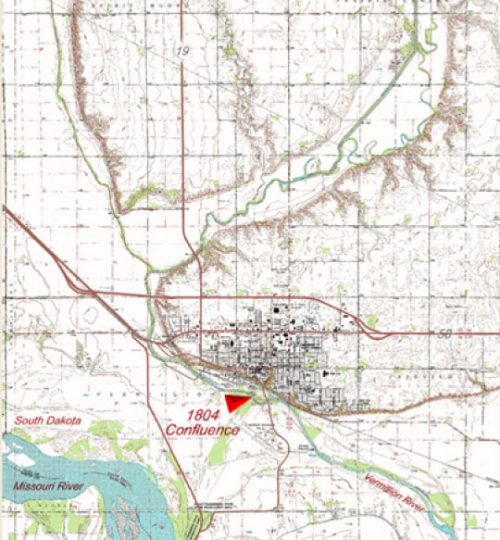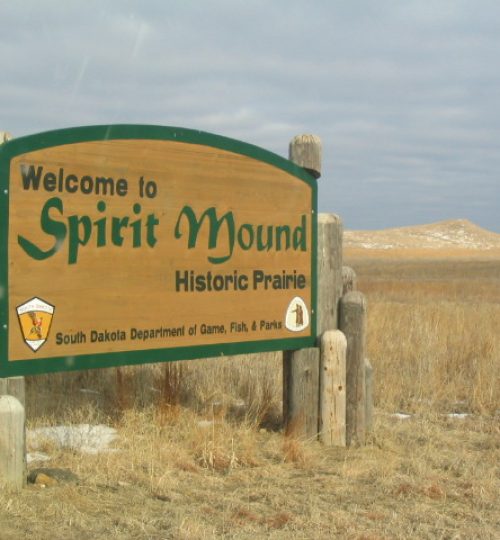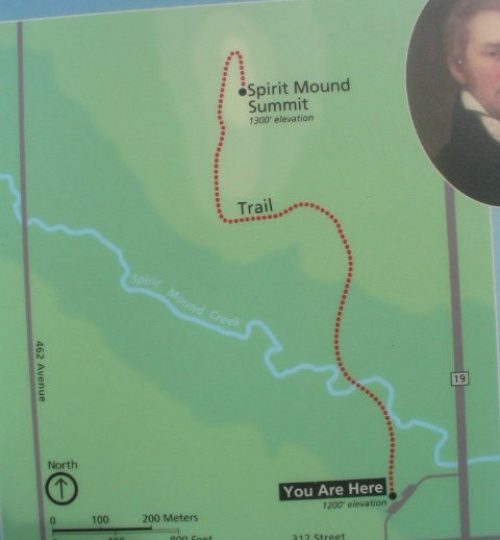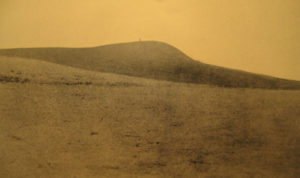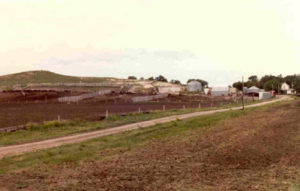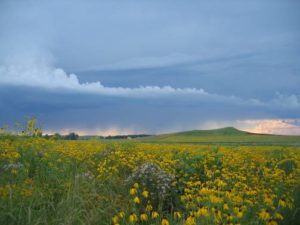Spirit Mound Today
Trail
lewis and clark trail
On August 25, 1804 the Missouri River joined the Vermillion River where the southern edge of the city of Vermillion is now located. Lewis and Clark's route to Spirit Mound passed right through the center of today's Vermillion. They made a nine mile trek to that one lone hill. It was famed among midwestern Native Americans tribes as the abode of the "little spirits." Their curiosity started the history for what Spirit Mound is today.
A 320-acre Spirit Mound site, formerly a cattle feedlot, was purchased, cleared, and seeded with prairie species. The intent is to restore it as much as possible to the conditions that Lewis and Clark saw approximately 200 years ago.
Spirit Mound is now a state park and visitor appreciation of the site is enhanced with a parking lot, restroom, interpretive signs, and a trailhead at the southeast corner of the property. A walking trail leads from there to the summit.
To travel the approximate course of Lewis & Clark in 1804, start at Cotton Park in Vermillion, take Dakota Street north, then Main Street west to Stanford Street / Hwy 19 and continue on it six miles to Spirit Mound.
Past to Future
spirit mound changes
Change came slowly to Spirit Mound after 1804. For fifty-five years the area remained the land of the Yankton Sioux, with fur traders conducting business from nearby posts on the Missouri River. The tallgrass prairie continued to thrive as it had for thousands of years before.
In 1859 the Yankton moved to a reservation 70 miles west, and Congress created Dakota Territory in 1861. The first homestead was filed on Spirit Mound in 1868. One pioneer recalled later that looking north from the top of the mound, only one tree could be seen all the way to the far horizon. But agriculture was coming.
In the next hundred years the mound changed tremendously. Settlers established two farmsteads, planted groves and windbreaks, and divided cultivated fields with barbed wire. Land along the creek was managed as a cattle pasture and a feedlot was operated on the eastern slope. The prairie habitat disappeared, except for a five-acre remnant high on the western side.
Preservation and restoration also came slowly to the mound. Local efforts placed it on the National Register of Historic Places in 1974 and in 1986 a local group incorporated the Spirit Mound Trust, dedicated to saving the mound as a public resource. The Trust's determined pursuit of this vision, under its long-term president, Larry Monfore, along with the Lewis and Clark Expedition bicentennial, created the momentum for the project seen today. The Spirit Mound Historic Prairie results from a unique partnership between the Trust, the South Dakota Division of Parks & Recreation, and the National Park Service.
The Spirit Mound Historic Prairie will be a permanent resource for those who wish to honor our history and observe the biological richness of the tallgrass prairie. Completely recreating the prairie primeval may be impossible, but that will always be the project partnership's goal.
More information about the prairie restoration can be found here.
